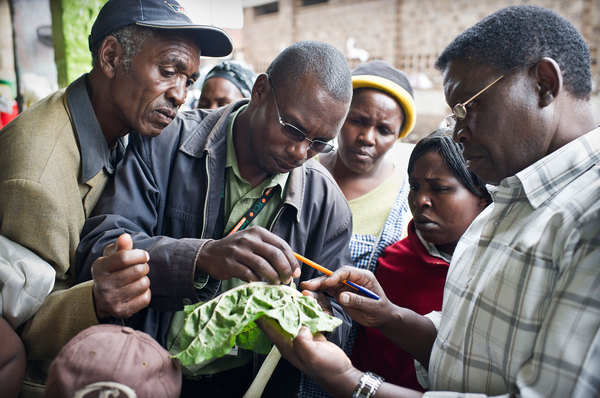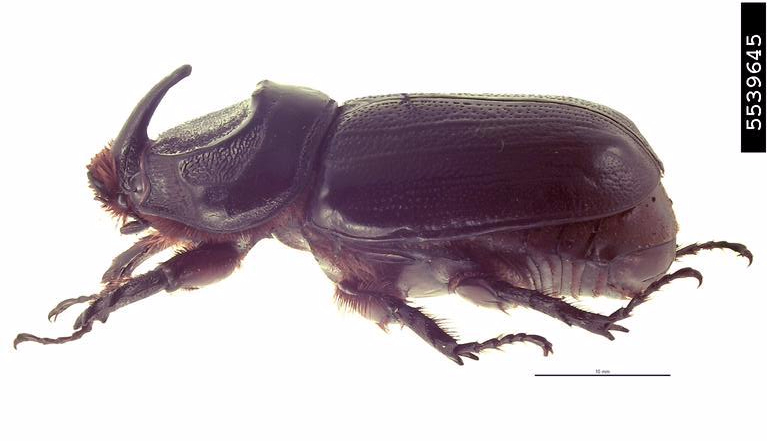Citrus Greening in Grenada
[youtube https://www.youtube.com/watch?v=KNlZQMRDNBU&w=560&h=315] Citrus Greening, also known as Huanglongbing, was first confirmed in Grenada in 2016. The disease is caused by bacteria which are spread by the Citrus psyllid. The disease causes yellow blotchy mottling on leaves, small lopsided fruit and branch dieback, making the tree uneconomical. Due to Citrus greening’s potential to devastate Citrus yields,…
Coconut Rhinoceros Beetle on Guam – an update
An adult male coconut rhinoceros beetle. Emmy Engasser, Hawaiian Scarab ID, USDA APHIS ITP, Bugwood.org 10 years ago the Coconut Rhinoceros beetle (CRB) was first discovered on the western Pacific island of Guam. Since then, these shoe-shine black, miniature invaders have spread to all parts of the island and are laying waste to the local coconut…
Fall armyworm could cost Africa $2bn+ in lost harvest
Last week, CABI confirmed that since it arrived in Africa in 2016, the Fall Armyworm (FAW) has been reported in 28 African countries, presenting a now permanent agricultural challenge for the continent. FAW mainly affects maize and can cut yields by up to 60%. In research funded by the UK’s Department for International Development (DFID), CABI…
INIA y Plantwise desarrollan entrenamiento en uso seguro de plaguicidas
La agricultura en el Perú se ha expandido rápidamente desde el 2000. Según el Instituto Nacional de Estadística e Informatica del Perú, el Producto Bruto Interno agrícola se ha más que duplicado entre 2000-2016. Este crecimiento estuvo relacionado a la ocupación de nuevas áreas agrícolas, pero…
Update: New Pest & Disease Records (24 Aug 17)
We’ve selected a few of the latest new geographic, host and species records for plant pests and diseases from CAB Abstracts. Records this fortnight include a first report of Citrus leaf blotch virus in lemon in China, first report of Groundnut bud necrosis virus infecting periwinkle (Catharanthus roseus) in India and the first report of Colletotrichum…
The Life Cycle of Fall Armyworm
The Fall armyworm, Spodoptera frugiperda, is a major invasive pest in Africa. It has a voracious appetite and feeds on more than 80 plant species, including maize, rice, sorghum and sugarcane. Another feature which makes it an incredibly successful invasive species is its ability to spread and reproduce quickly. CABI have developed a poster to…
CABI scientists shed light on factors affecting the use of biological control
Human health issues arising from the use of synthetic pesticides and concerns about their environmental toxicity are making lower-risk alternatives increasingly attractive. Biological control agents are living organisms which reduce harmful pest populations. Many people know of the common ladybird, whose larvae feed on aphids, but a wide range or biological control agents – e.g.…
Citrus greening detected in Trinidad
Huanglongbing (HLB), also known as Citrus greening, has been confirmed in Trinidad for the first time. The disease, which was detected on leaves from a lime tree in the north of the island, can cause devastating yield loss for Citrus growers and is regarded as one of the most important threats to global commercial and…
CABI leads rapid identification of Fall Armyworm
Identifying armyworms usually involves taking the larvae that have caused the damage, waiting for them to develop in to adults and then studying the body and markings of these adults to identify the species collected. This process causes delays to identification, and could therefore delay action for what are some of the most ravaging crop…
Al Jazeera visits plant clinics in Nepal
Al Jazeera correspondent Gelareh Darabi recently travelled to Nepal for the broadcaster’s Earthrise programme, to see how plant clinics in Pokhara are helping farmers deal with crop pests such as tuta absoluta. Visit the Al Jazeera website to read the related article→




